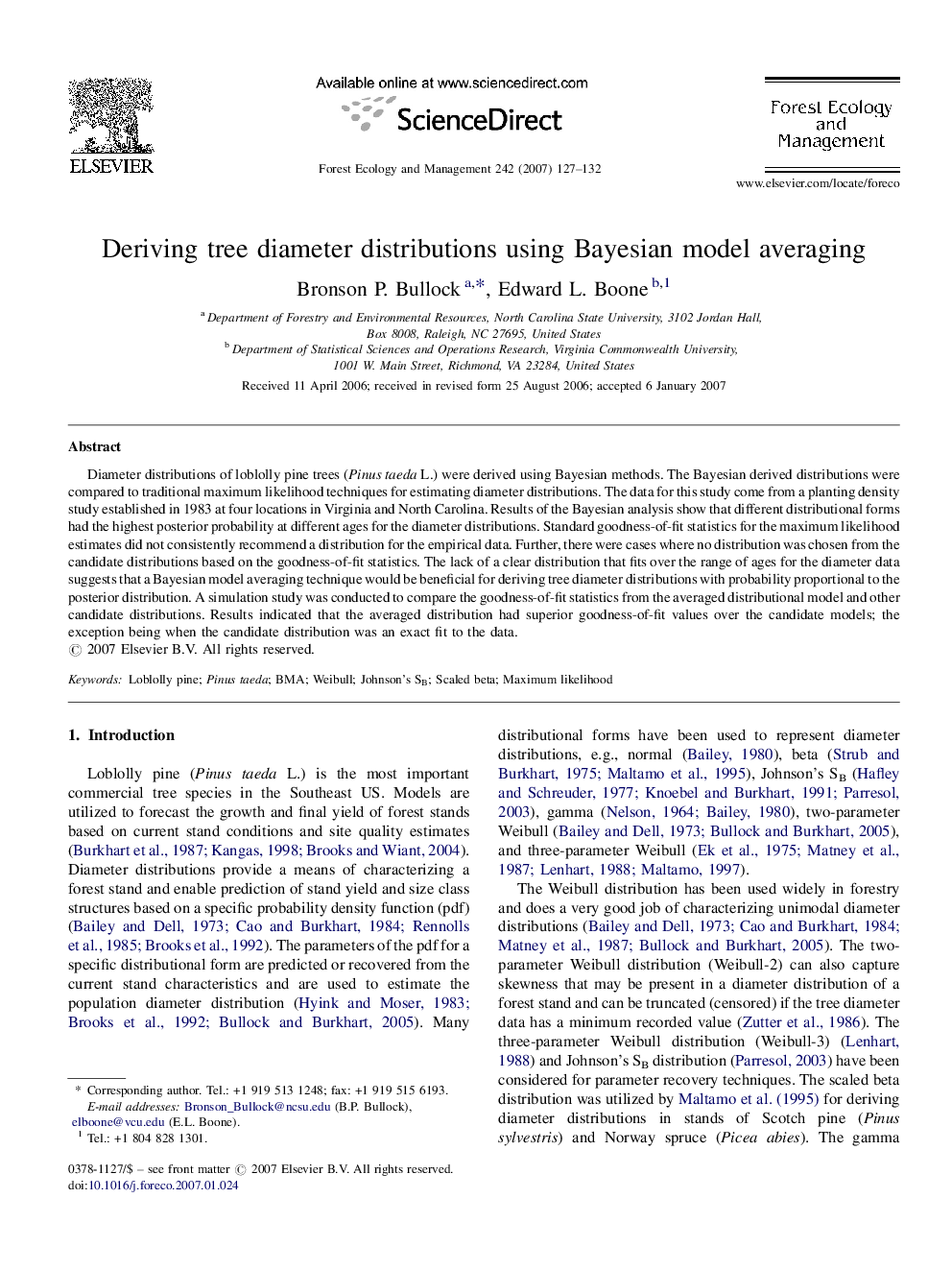| Article ID | Journal | Published Year | Pages | File Type |
|---|---|---|---|---|
| 90623 | Forest Ecology and Management | 2007 | 6 Pages |
Abstract
Diameter distributions of loblolly pine trees (Pinus taeda L.) were derived using Bayesian methods. The Bayesian derived distributions were compared to traditional maximum likelihood techniques for estimating diameter distributions. The data for this study come from a planting density study established in 1983 at four locations in Virginia and North Carolina. Results of the Bayesian analysis show that different distributional forms had the highest posterior probability at different ages for the diameter distributions. Standard goodness-of-fit statistics for the maximum likelihood estimates did not consistently recommend a distribution for the empirical data. Further, there were cases where no distribution was chosen from the candidate distributions based on the goodness-of-fit statistics. The lack of a clear distribution that fits over the range of ages for the diameter data suggests that a Bayesian model averaging technique would be beneficial for deriving tree diameter distributions with probability proportional to the posterior distribution. A simulation study was conducted to compare the goodness-of-fit statistics from the averaged distributional model and other candidate distributions. Results indicated that the averaged distribution had superior goodness-of-fit values over the candidate models; the exception being when the candidate distribution was an exact fit to the data.
Related Topics
Life Sciences
Agricultural and Biological Sciences
Ecology, Evolution, Behavior and Systematics
Authors
Bronson P. Bullock, Edward L. Boone,
